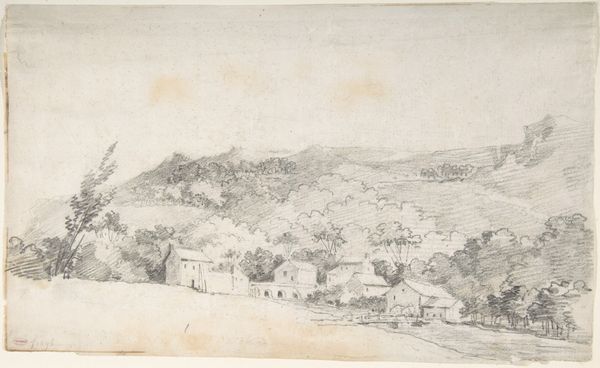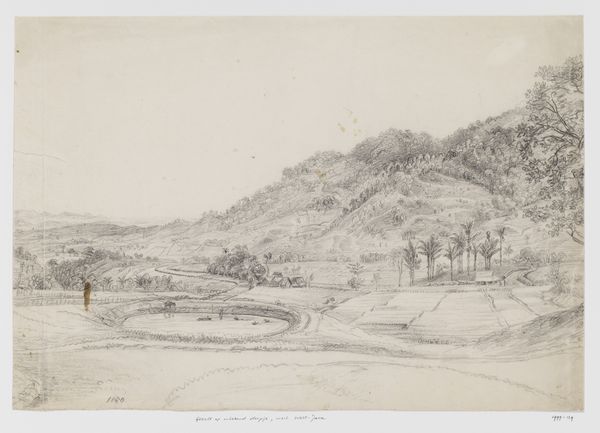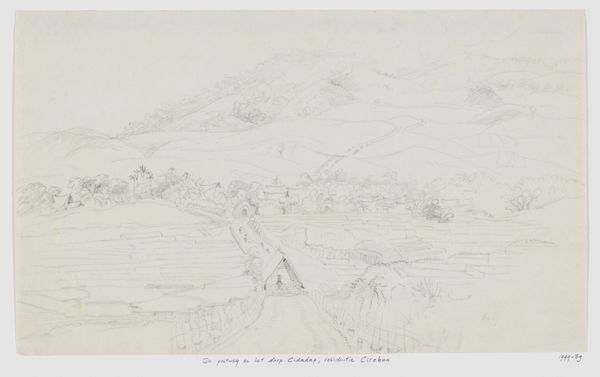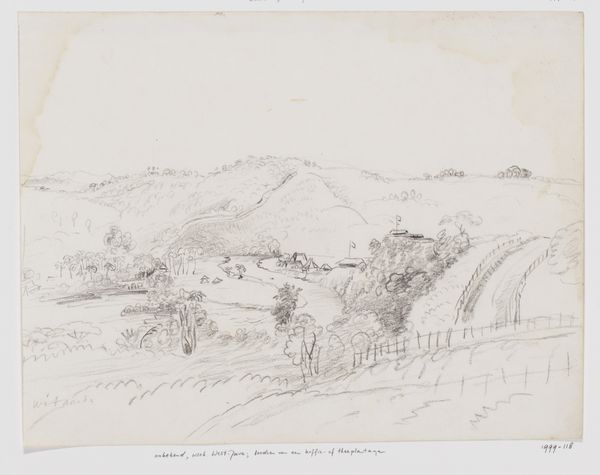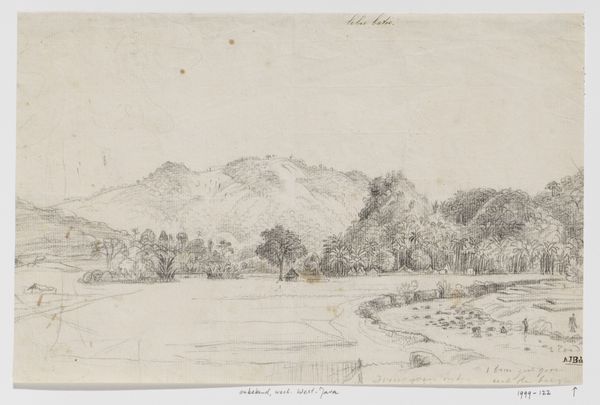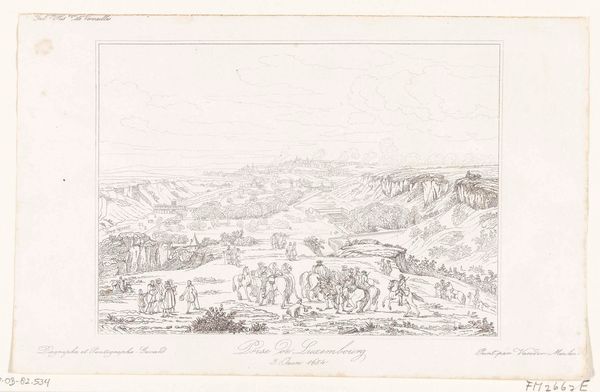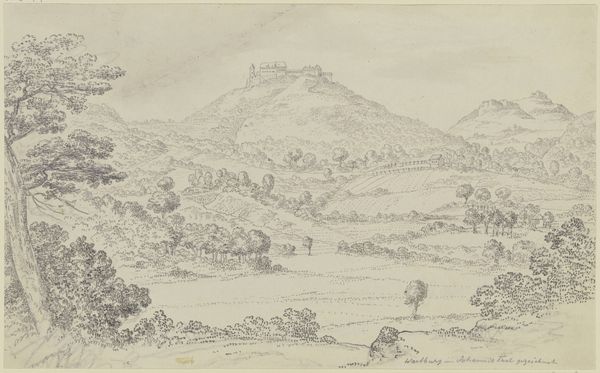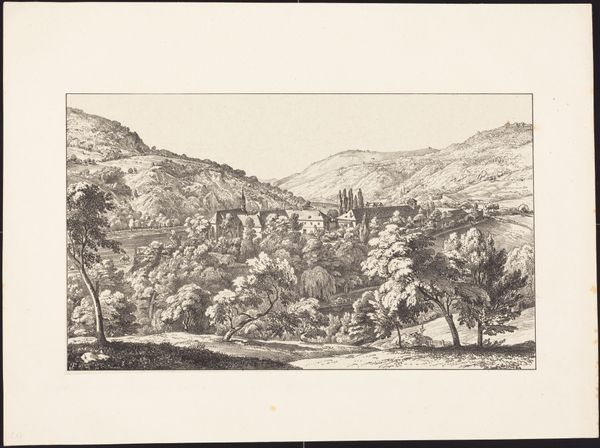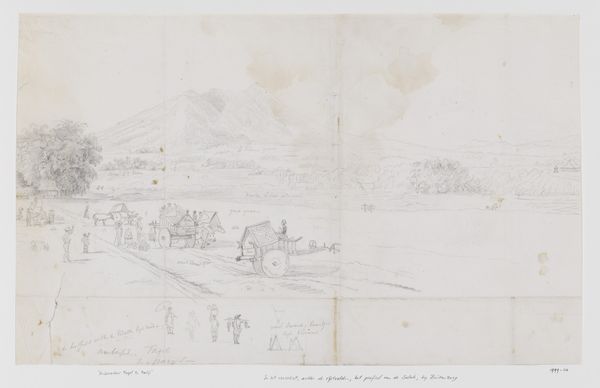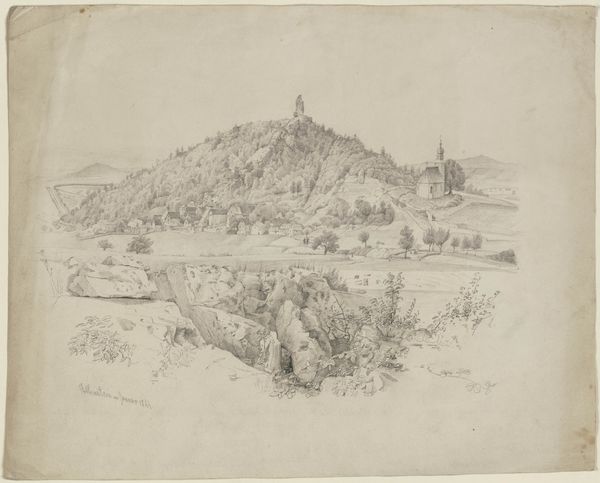
Gezicht op een dorp aan de voet van een berg, rechts een rijstschuur, West-Java c. 1816 - 1846
0:00
0:00
adrianusjohannesbik
Rijksmuseum
drawing, pencil
#
drawing
#
dutch-golden-age
#
pencil sketch
#
landscape
#
etching
#
pencil
#
orientalism
#
watercolor
#
realism
Dimensions: height 262 mm, width 399 mm
Copyright: Rijks Museum: Open Domain
Curator: This detailed pencil sketch by Adrianus Johannes Bik offers us "A View of a Village at the Foot of a Mountain, with a Rice Barn on the Right, West-Java." It was likely created sometime between 1816 and 1846. Editor: It has such a tranquil quality, almost dreamlike, despite the clarity of the architectural details. The thatched roofs of the buildings, nestled into the landscape, are echoed by the gentle slope of the mountain behind. It’s like a miniature world contained within the borders of the page. Curator: The interesting thing is, while appearing to be a straightforward landscape study, these kinds of images from this period are almost always politically charged. The Dutch colonial presence is silent here, but inherent. Editor: Inherent how? It seems so removed from any explicit power dynamics. The rice barn feels almost symbolic of the land’s bounty and the cyclical nature of life in the region. Curator: And who is benefiting from that bounty? Think about the function of images in colonial administration; the cataloging of resources, the depiction of "native life" for a European audience, the silent claim of possession made simply through representation. Editor: That's a valid point, particularly concerning the recurring symbol of rice, so pivotal for cultural continuity and sustenance. It reminds me how easily such seemingly idyllic scenes can mask complex historical realities, a point to consider with Orientalist depictions like this. Do you see anything within the village's architectural details which speaks to such complex realities? Curator: The depiction of everyday life becomes a form of control. The meticulousness of the drawing also emphasizes the colonizer's perceived "rational" view imposed upon this landscape. Notice also, how the lines seem softer, gentler when outlining natural forms but gain acuity describing the settlement. Editor: Yes, I see now how the artist distinguishes the cultural imposition onto natural harmony with his careful shading. It invites us to reconsider such bucolic beauty within a critical framework, to question both the romantic portrayal of distant lands and our implicit responses toward colonial documentation as something “beautiful”. Curator: Exactly, it’s a reminder that images are rarely neutral, and the power lies in understanding what they choose to reveal – and what they conceal. Editor: So even within this subtle drawing, the past continues to shape our view and challenges how we consider artistic depictions. Thanks for uncovering so much!
Comments
No comments
Be the first to comment and join the conversation on the ultimate creative platform.
